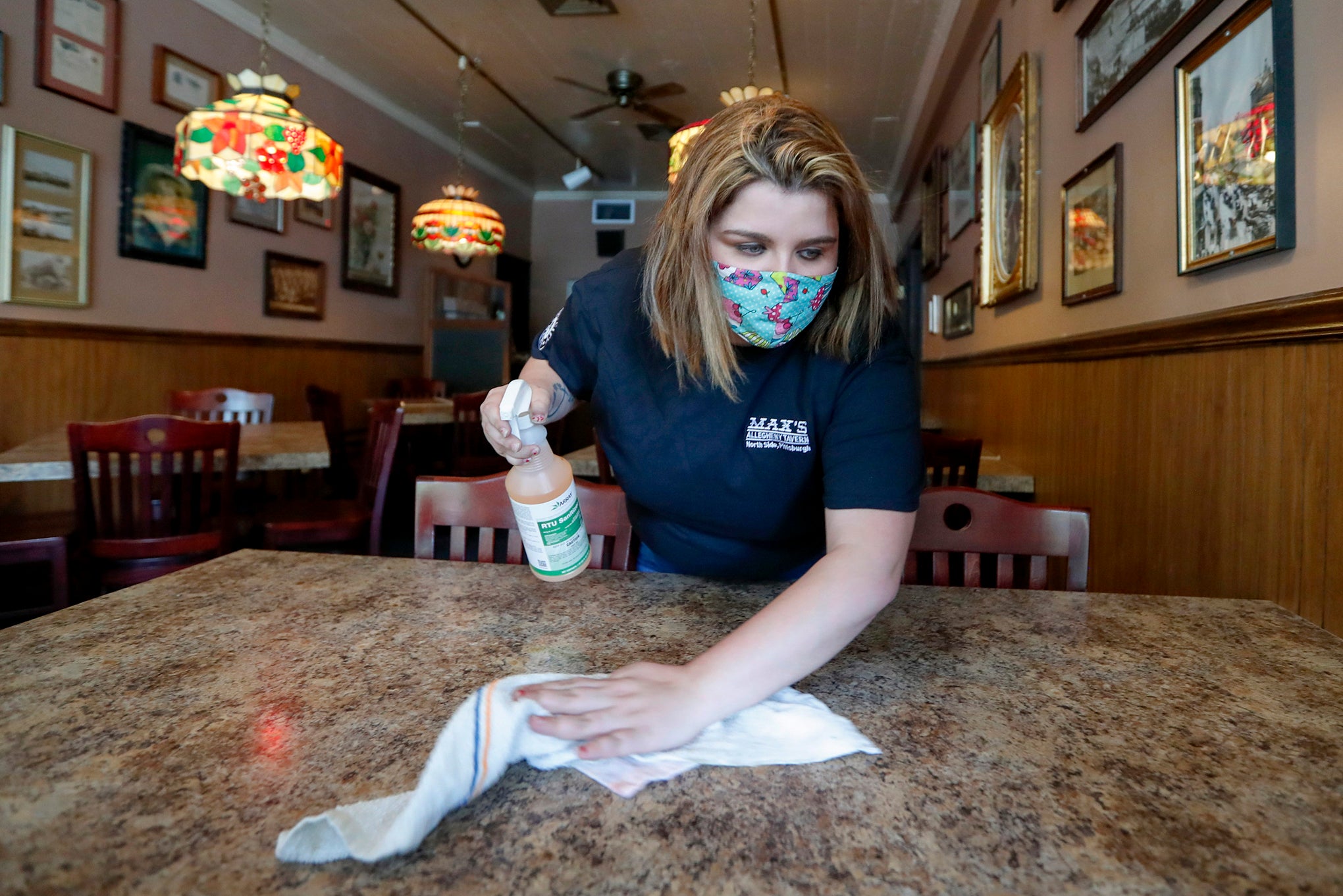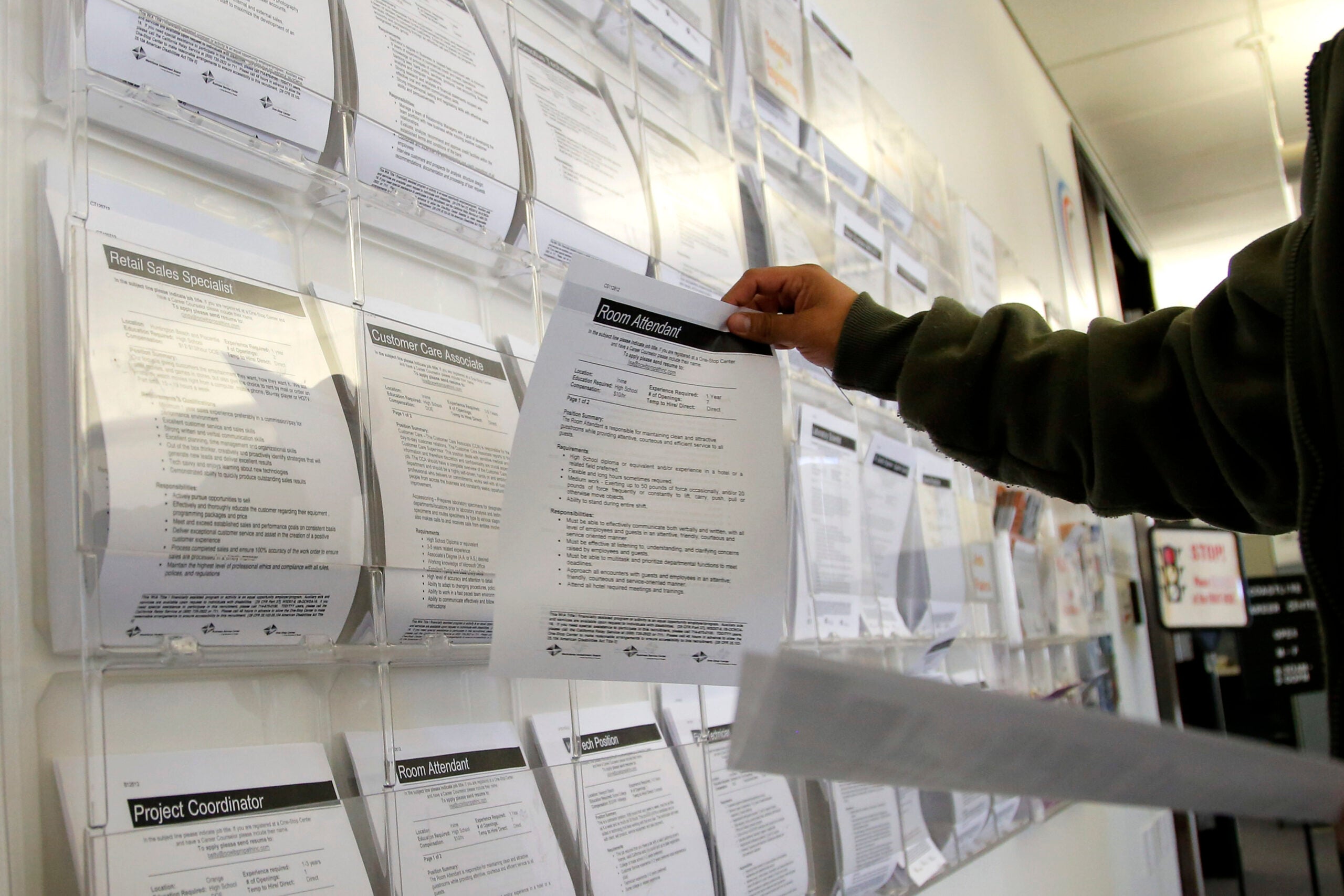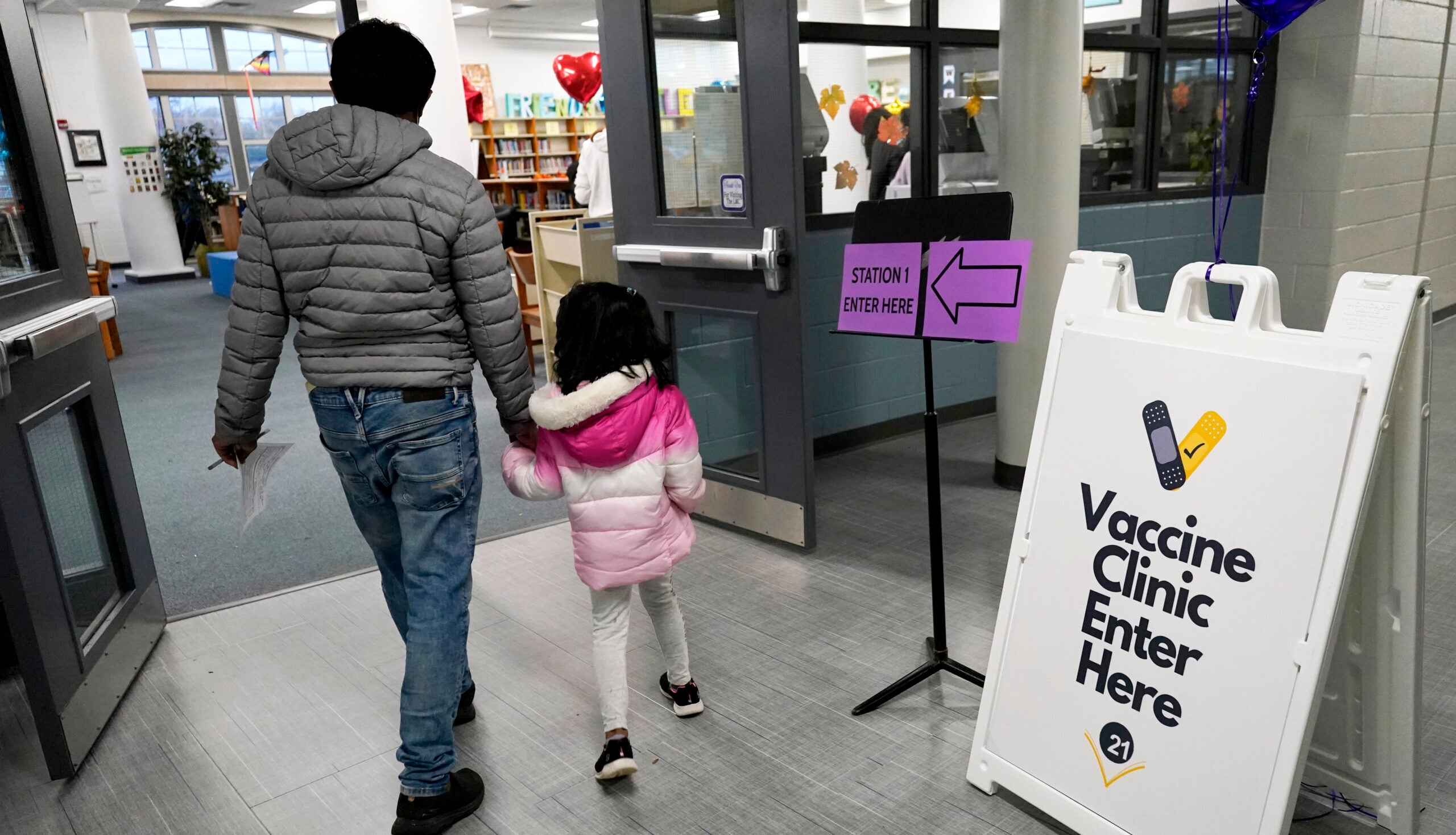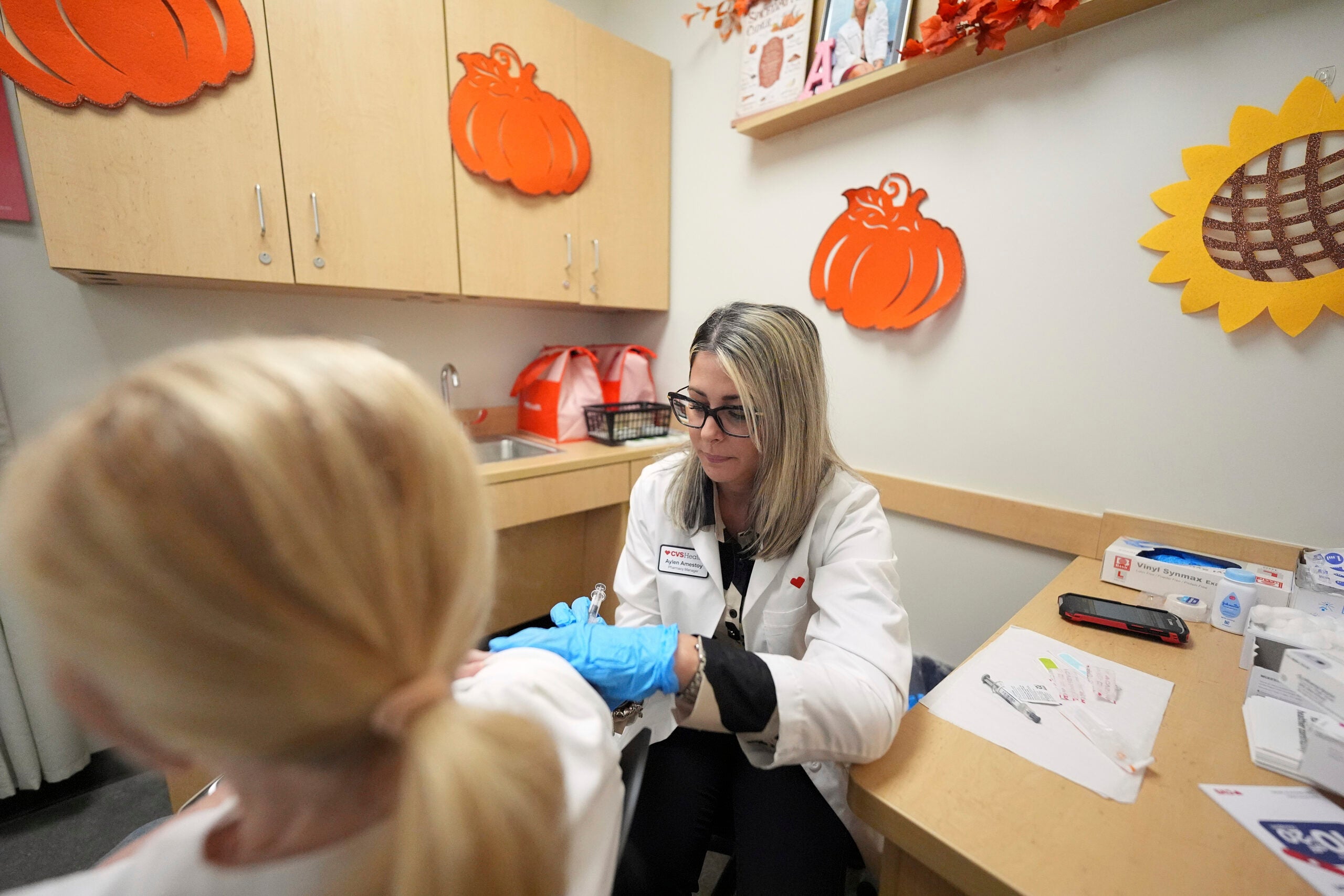Excited. Lucky. Cautious. Those are just a few of the ways people returning to work are feeling about the chance to get back into the office during a pandemic that has forced 14 percent of Wisconsinites out of a job.
Ben Barmore, 22, recently returned to work at Creative Learning Preschool and Child Care Center in Madison. The day care closed its doors in an attempt to slow the spread of COVID-19, but reopened on June 1.
“I was very excited to get back to work,” Barmore said one morning as he walked to the day care. “Just because I feel with the right safety precautions in place, it’s the best thing for the kids to have that routine.”
News with a little more humanity
WPR’s “Wisconsin Today” newsletter keeps you connected to the state you love without feeling overwhelmed. No paywall. No agenda. No corporate filter.
As a precaution, employees take their temperature daily and watch for other signs they might be infected with the coronavirus.
But for other businesses across the state — like retail and restaurants — the decision to reopen can be more difficult.
According to Wisconsin Economic Development Corp. (WEDC) Secretary Missy Hughes, 20 to 30 percent of the state’s companies might have to call it quits, depending on how quickly they can reopen. While the statewide stay-at-home order ended in May, many local municipalities have their own guidelines as to how quickly businesses can open and at what capacity.
In Dane County, public health officials released a plan for a phased reopening called Forward Dane. Currently, in phase two of reopening, businesses like restaurants are allowed to open at 50 percent capacity inside.
Even for those who have reopened, many business owners are unsure how many customers they can expect while COVID-19 is still a threat. Workers also have mixed feelings about reopening, but many are desperate for a paycheck.
Javonte Woods, 30, was a dishwasher at a Madison restaurant before dining-in was banned temporarily to prevent the spread of COVID-19. Take-out means no silverware, plates or glasses to wash, so Woods was out of work.
He thought about applying for unemployment but never did. He’s hoping the service industry will rebound.
“I could work now. I could work today. But who knows? You got new risks and new concerns,” Woods said.
He and others are worried some customers might not come back despite businesses’ best efforts to make them feel safe.
Hughes echoed this worry during a June 9 briefing with reporters.
“If these small businesses are asked to endure another impact of closing or even just lack of consumer confidence, keeping consumers at home, keeping employees at home, we’re going to see more closures,” she said.
Tom Neal, 34, is a registered nurse at Select Specialty Hospital in Madison. As an essential worker, he never stopped going in to work — and it’s something he’s thankful for.
“I feel much worse for those who work in service industries like restaurants. And you know, ‘nonessential jobs’ that have gotten furloughed,” said Neal. “A lot of nurses I know who work in critical care have been furloughed as well because they don’t have the patients for the hospitals to support their salaries.”
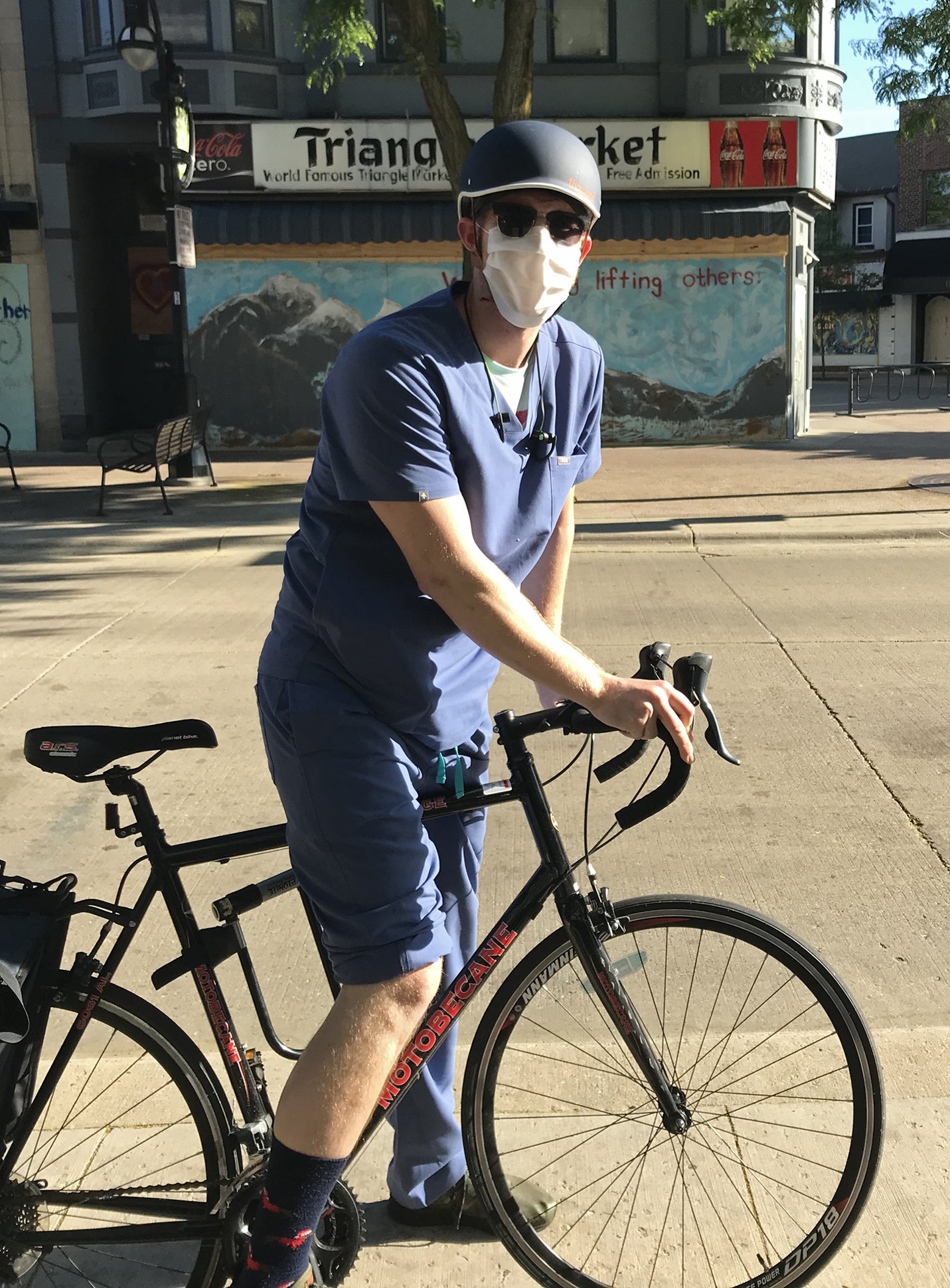
He isn’t concerned about catching COVID-19 on the job, noting there are precautions at the hospital to prevent spread of disease. But he worries about others who come in contact with the public daily.
“People who are busting their butts bagging groceries for a quarter of what I make at my job, which is guaranteed, are taking all the risk all day long,” said Neal. “If I’m going to get it from someone, I’m going to get it from a co-worker, not a patient. They are all tested to the nines.”
Twenty-two-year-old Erica Hill also feels lucky. A geological engineering major at the University of Wisconsin-Madison, Hill recently started an internship with the Wisconsin Department of Transportation (DOT).
“A lot of my friends, their internships with major companies were canceled,” she said. “I feel really fortunate.”
Hill will be working in the DOT’s Bureau of Technical Services to determine how potential roadways can support traffic. If the internship hadn’t come through, Hill dreaded a long summer with nothing to do and no income.
“I have no idea what I would have done. Maybe look for a job at a restaurant or grocery store, just anything for money. I’m a student, I need to pay all my loans,” she said.
Hill’s not worried about working around others during a pandemic. She said she’ll wear a mask and keep her distance. She also plans to work from home as much as possible.
Health officials say increased testing can help restart a stalled economy by giving health departments the ability to control the virus before it gets a grip on Wisconsin communities. Businesses are also trying to do their part by cleaning more, requiring masks and preventing crowds.
And while the future of the COVID-19 pandemic in Wisconsin remains unknown, people continue to do their part to slow the spread — because no one wants to close again.
Wisconsin Public Radio, © Copyright 2026, Board of Regents of the University of Wisconsin System and Wisconsin Educational Communications Board.
